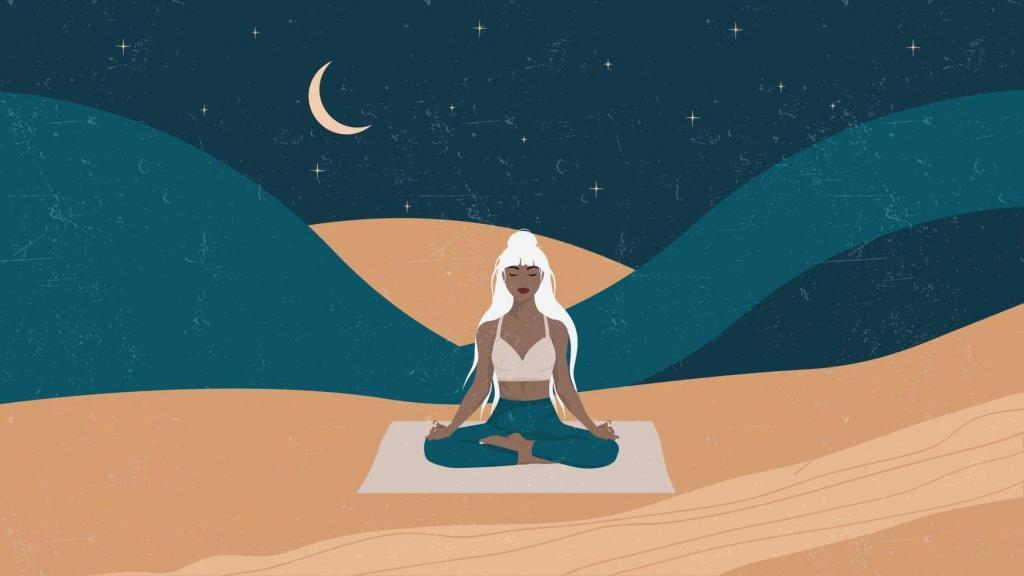Mindfulness Meditation

By Paolo Giannone
Mindfulness meditation is often confused with other forms of meditation. The main target when concentrating is to try and focus on a particular part of the body or the min, to reach a target and develop certain ability.
Activity like “Thai-chi” and “Yoga”, are all forms of concentration. Mindfulness meditation however is different, its purpose is to completely free the mind of any thoughts, relaxing the body to such an extent that every thoughts disappear. This state can last anything from a few seconds to many hours in depending from your ability. To reach the highness of spirituality, you must reach the highness of purity in your mind.
To reach this state you must concentrate on the “sound within yourself” to reach the “light within yourself”. A place far away at the end of a long and dark place. The light is getting closer and closer and when we reach the end of the tunnel and embrace the light, the blessing that we receive cannot be explained. To reach this state we have to reach a pure state through Mindfulness meditation, have “pure” intention and concentrate on the “sound” of the inner you.
Mindfulness meditation seems like it’s giving us the means to reach a mental purity, and there are several techniques that one can use to meditate effectively, many of them utilize the Mantra, which is a collection of words and sounds that get repeated mentally to help us reaching our target. Mantra is sacred, there are many ways to apply the mantra, and no mantra is better than the other, and it is extremely important to reach that state of purity of the mind.
1- Mantra is a very simple thought, and it becomes more natural and familiar, as we repeat in our mind. This thought is used to substitute all of our other thoughts, and every time a different thought comes into our head we substitute it with the mantra.
2- When we exercise in the mindful meditation that uses the Mantra, we tend to associate the mantra to a condition of calmness. This association is called Neuro Linguistic Programming. After having trained for this, even if we are tense about something, thinking about the mantra will immediately take us to a condition of calmness. This makes the Mantra an indispensable tool that we can use to face the most stressful situations that we have in the course of our life.
When we understand the Mantra, and how it works it becomes very evident that changing techniques in which the Mantra is applied is not always a good thing to do. Changing Mantra is good only in special situations when we need to eliminate a habit which is impeding us to reach a certain mental condition that does not make us quite. It is also obvious the Mantra that we use should be reserved to ourselves, if we disclose this information we give other the chance to control our mind. The best mindful meditation teachers will abstain from giving away the best mantras available and concentrate only on one.
Mantra is usually made of a vowel alternated to some nasal sounds and it can contain several words. The most famous mantra is “ooooohm” or “aaaaummm”, but any other word can do the same job if we extend the vowel and the nasal sound. it is better if the mantra contain a spiritual word, word which means a gift to a god rather than a commonly used word which has no affinity to the spiritual world. Who does not wish to sing religious chants, could alternatively use other unusual words in order to obtain the same result. Mantra literally means: Manas = Mind, and Trya = To Free Both together forms the sentence free your mind.
The position assumed during meditation is extremely important, the easiest position is a comfortable one with your spine straight, too much relaxation and you will probably fall asleep. Join your hands and stretch your legs so to crate a Bio-energy field around you. The typical Yoga position is another good one, but it needs a certain dexterity or the fetus position.
If you have never tried mindfulness meditation, find a quite place and try the following technique:
1- Assume one of the positions mentioned earlier, it has to be a comfortable one in order to meditate effectively.
2- Close your eyes and relax every muscle in your body including your face. Breathe and exhale alternatively from one nostril only. Close a nostril each time with your finger while alternating breaths.
3- Try to ignore every thought that comes into your head, trying to create an empty space in your head. If a thought comes into mind try to use a mental Mantra like ” oooohhhmmmm ” to eliminate it. You can carry on counting and eliminating thoughts without analyze them and when you are down to 2 or 3 thoughts in the space of five minutes it means you are meditating effectively.
With a little practice you should be able to achieve the freedom of the mind through mindfulness meditation in every place, even if full of people utilizing the technique of the Mantra. Use the Mantra regularly until you have enough meditation experience as the thought of the Mantra is associated with a free mind.
One of the benefits of mindfulness meditation is that it opens your mind to new ideas, become more creative or solves your problems. Try to think of your mind as a glass full of water, if you put more water it ill just spill out. Many intelligent people do meditate regularly, Albert Einstein and Edison notoriously meditated in different forms trough the years.
Meditation is also described as “listening to silence within the thoughts”, this ability is a necessary condition to receive “Telepathic Transmissions”, without silence in your own thoughts you will never be able to listen to everybody else’s thoughts.
People that practice meditation on a regular basis can be seen very clearly from the way the look and they act, which is between 10 and 154 years younger than they actually are. By giving our brain a break from the thoughts that daily gets crammed within it, and by allowing the auto regeneration of our mind we could reach results that are beyond our comprehension.


